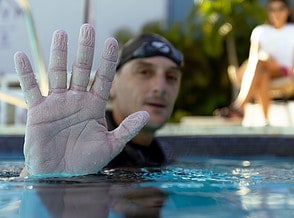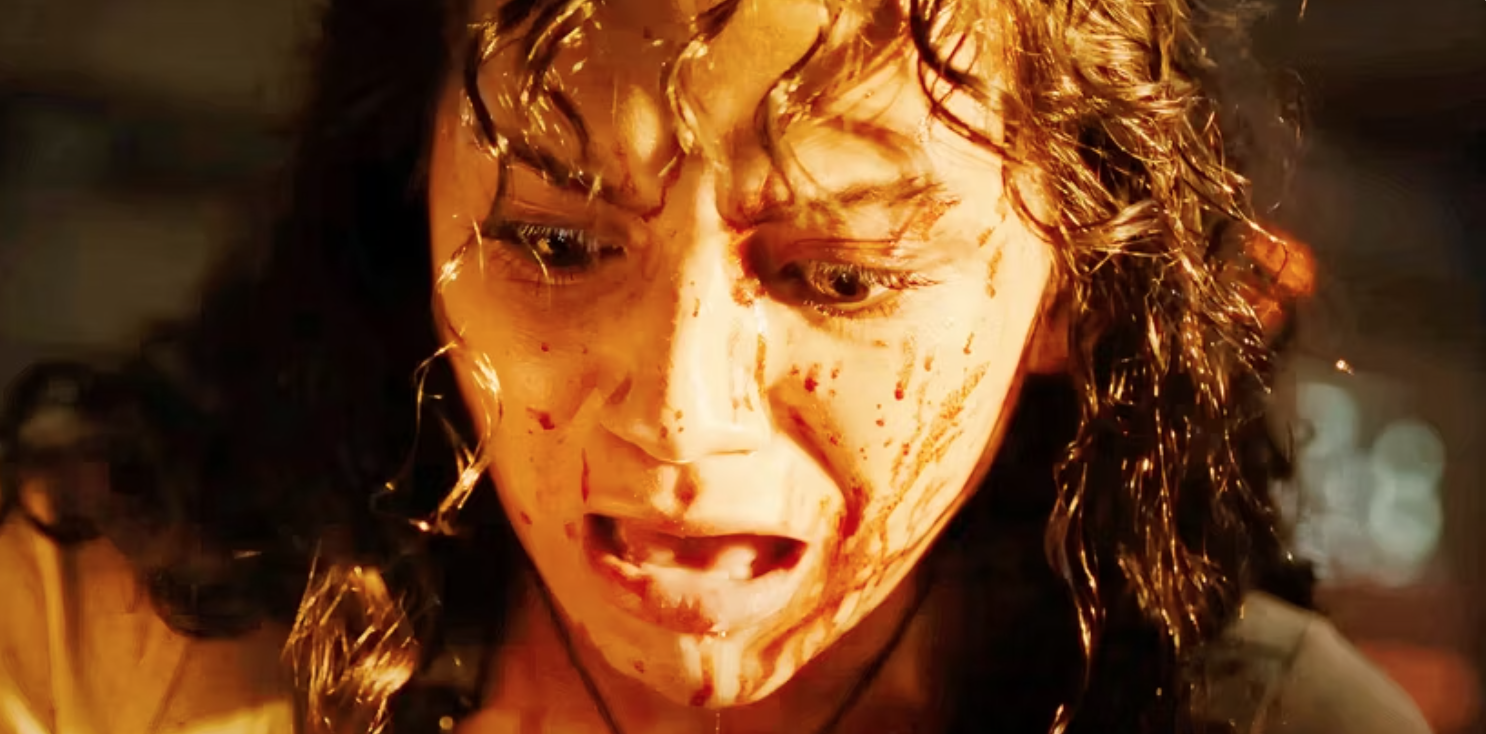
(Image credit: 20th Century Studios)
In life, it certainly seems like everything evolves from a natural state of simplicity to incomprehensible complexity, and so it is in Tinsel Town, where stripped-down, crystalline ideas become increasingly convoluted as time marches into infinity.
This is most evident in the “Alien” film franchise, where all we once had to remember was a nest of leathery eggs housing spider-like facehuggers, a baby chestburster, and a single rampaging biomechanical monster picking off space truckers aboard a deep space commercial vessel. Then came “Aliens” with its complement of drones, warriors and a bitchy Queen to further fill out the cast of lethal extraterrestrial creatures bent on ruining our day if given the chance.
Two sequels and two prequels later (not counting crossovers with Predator), we’ve been overrun with numerous variations and iterations of these lethal animals like the uniquely grotesque “Newborn,” cobra-ish hammerpedes, tentacled Trilobites, the proto-xenomorph known as “The Deacon,” sleek humanoid neomorphs, and now the newest configuration in Fede Alvarez’s “Alien: Romulus,” “The Offspring.”
So what exactly is this hideous new hybrid being that appears in the final act of “Romulus” and what are the disparate components of its evolutionary makeup? Let’s dissect this lean lanky monster from head-to-toe and learn how it was brought to life by a mega-tall Romanian basketball player named Robert Bobroczkyi.
Spoilers ahead for ‘Alien: Romulus’
How Was “The Offspring” Originally Conceived?
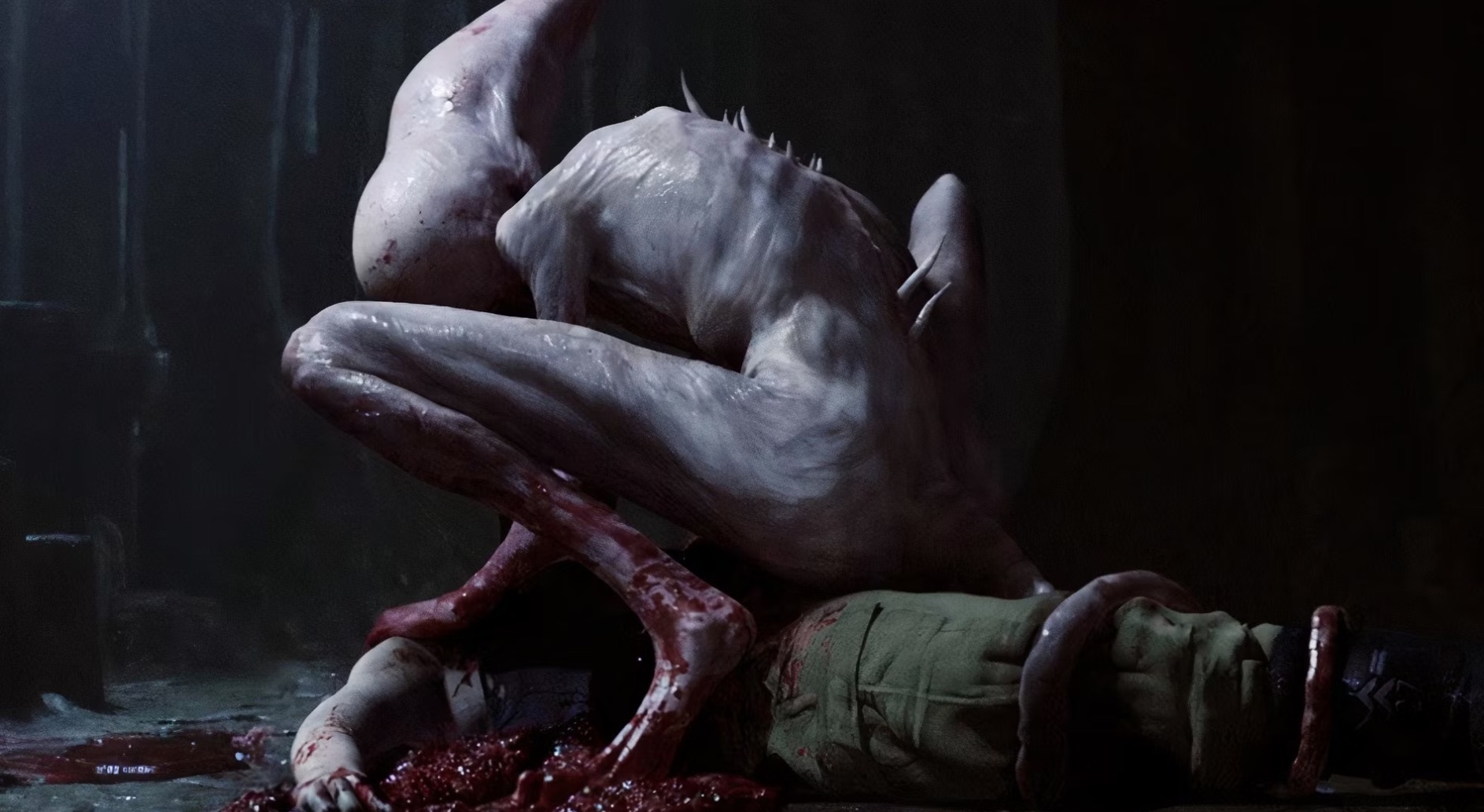
As witnessed in the chaotic conclusion of “Romulus,” a very pregnant Kay (Isabela Merced) is captured and cocooned by a xenomorph before being liberated by Rain (Cailee Spaeny) and the android Andy (David Jonsson). Hurt and hoping to protect her unborn child, Kay makes the questionable decision to inject herself with the hazardous “Compound Z-01,” a genetic accelerant serum extracted from a recovered xenomorph’s DNA and engineered to advance humanity beyond its fragile state to supply Weyland-Yutani with a resilient workforce for its hostile off-world colonies.
However, this refined form of the famous “black goo” pathogen was to be used as a catalyst to create the ultimate organism but causes reckless mutation when ingested or injected within any host body, and is simply too radical of a non-Newtonian substance to derive any sort of predictions as to a favorable reproductive outcome.
This same nefarious substance was a major plot device in 2012’s “Prometheus” where the Engineers stored vast canisters of the “black goo” source material at their weapons depot on LV-223, and is that same black death rain David (Michael Fassbender) uses as a biological agent on Planet 4 in 2017’s “Alien: Covenant.”
To keep Kay safe for her return trip to the Jackson’s Star Mining Colony, Rain sedates her in a cryo-chamber. But terrifying trauma is soon afoot as the dangerous fluid completes its destructive process and Kay births a repulsive, egged infant that starts growing unnaturally at a rapid rate into a human-engineer-xenomorph concoction.
Who Portrayed “The Offspring” In “Alien: Romulus”
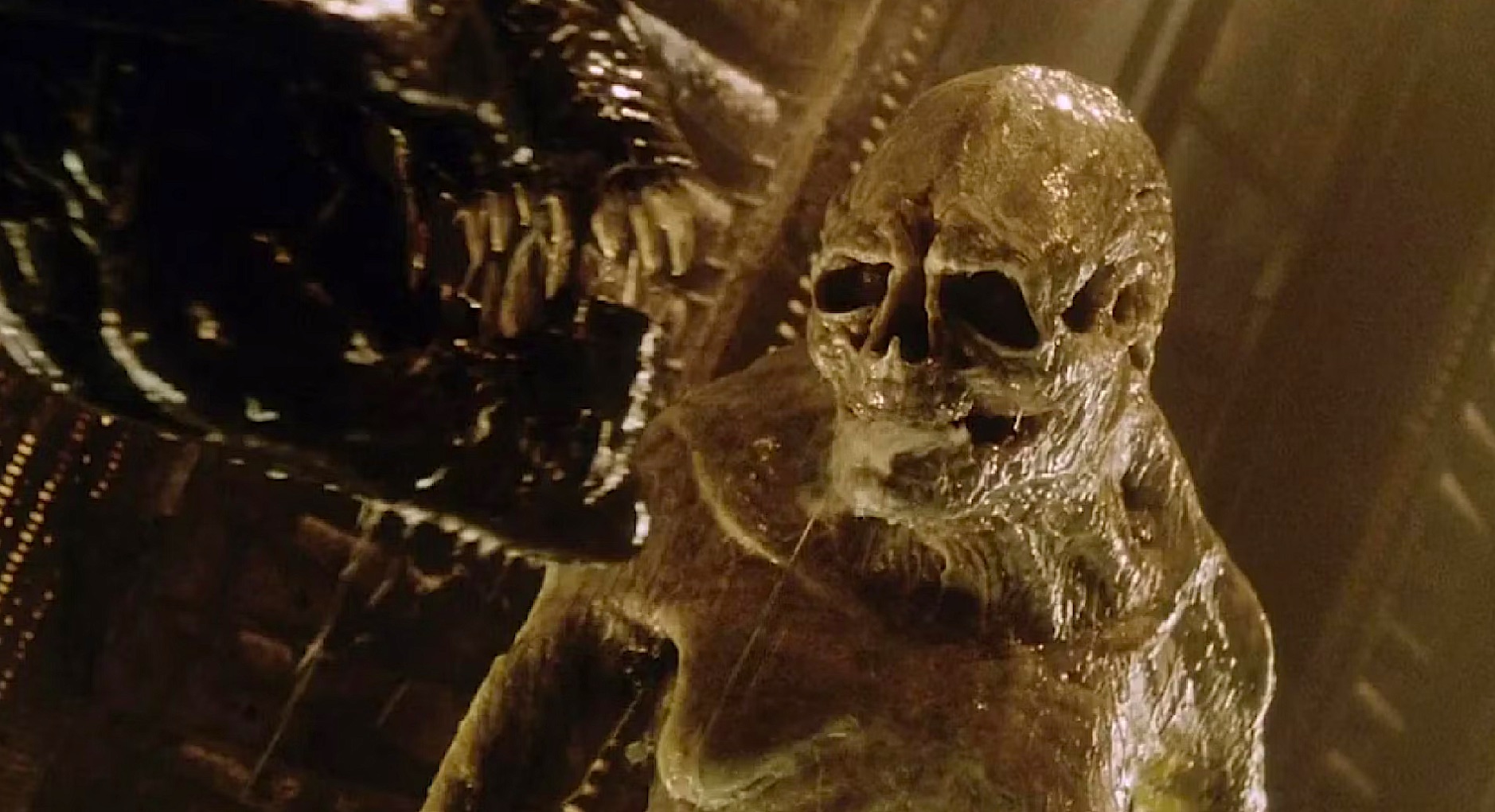
Via the magic of Academy Award-winning Hollywood creature effects masters at Legacy Effects, “The Offspring” was played by Romanian basketball player Robert Bobroczkyi utilizing practical effects. Standing at seven-foot-seven, he’s one of the tallest college basketball players in history and last played for Rochester Christian University during the 2021-2022 season. Adding some prosthetic enhancements, minor animatronics and a touch of CGI completed the villainous baby’s costume.
“The way it’s described, you’re trying to picture it in your head, and you don’t know how the director is going to create this character,” visual effects supervisor Daniel Macarin tells Variety. “Is it going to look like a xenomorph? Is it going to be something very unique? Is it going to be something we’ve never seen before?”
Appropriately nicknamed “The Offspring,” this nightmarish cross-species deformity is second only to the disgusting abomination called “The Newborn” in 1997’s “Alien: Resurrection,” with its deep-set black eyes, squishy torso and long wiggling tongue licking his mother, who happens to be the resurrected Ellen Ripley clone.
“The first time saw the plates, and this 7-foot [tall] actor in there, in his costume. It was terrifying,” Macarin says. “They did such an amazing job with the look and the feel of that character that we knew that everything that we could bring to it was just going to help.
“You don’t get a lot of screen time with this character, so it’s making sure that the audience never has the wrong reaction to it. If they giggle at it or something comes off as funny, then you’ve taken them out of the moment, and we don’t have enough time to probably get them back into the action.”
What Does “The Offspring” Look Like?

Since the Prometheus Compound is a genetic cocktail that’s not quite perfected, what we see is the shocking fusion of characteristics that include recognizable human features, the elongated domed skull of a neomorph as seen in “Alien: Covenant,” the spikes, tail and back-holes of the basic xenomorph, and the face of a young Engineer with its pale translucent skin and penetrating soulless eyes. This weird rapidly growing baby slaughters Kay and badly injured Andy before battling Rain and getting 86’d out into the cold vacuum of space. But did it perhaps survive?
By employing our previous knowledge of xenomorphs being able to survive in outer space using some type of fossilized secretion as seen in the “Alien: Romulus” opening, it’s a pretty good bet that this freakish hybrid might not have expired yet and could actually return in a future sequel as the “Alien” canon keeps evolving.
“It’s not something you want to directly connect,” Macarin adds. “But if you hint that there’s a larger story there, there’s more mystery, and maybe we’re just seeing the beginnings of those ideas, it was definitely something that we wanted to explore.”
How Is “The Offspring” Connected To The Engineers?
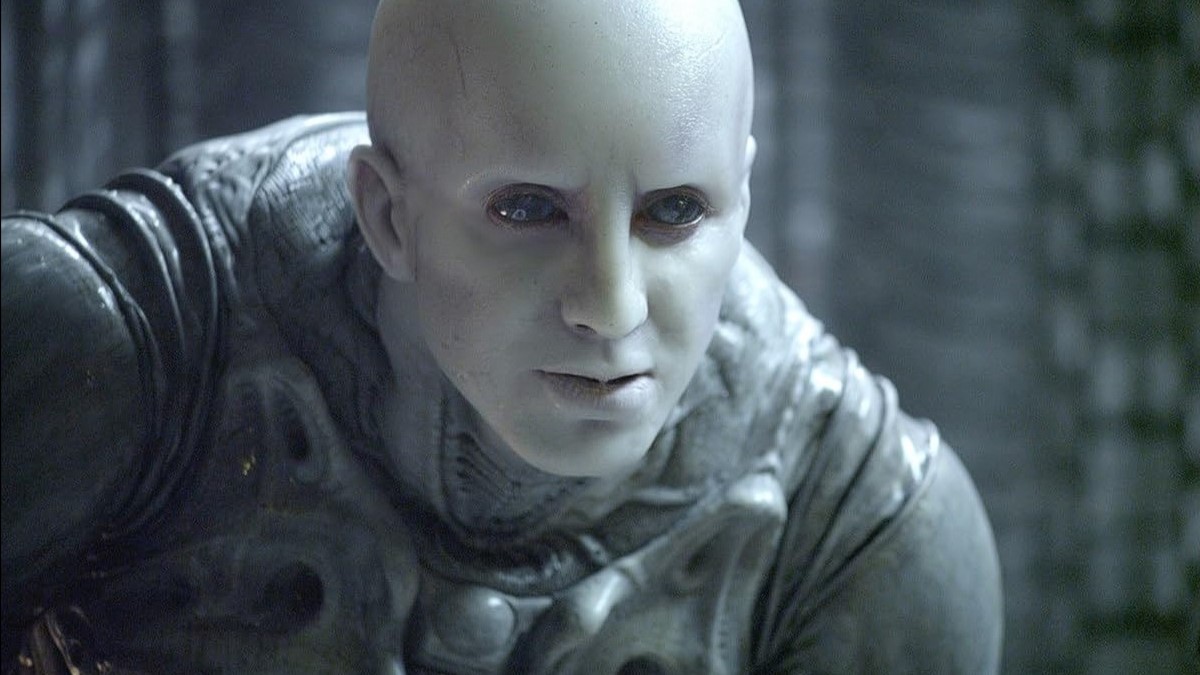
Since the “The Offspring” bears striking similarities to the planet-seeding Engineers first appearing in director Ridley Scott’s “Prometheus,” we can speculate that there’s some greater component of the overarching “Alien” mythology to be explored further in subsequent films. One query that comes to mind is who created the Engineers and their mutagenic life-altering “black goo” in the first place?
“I was hoping that people picked up the whole Engineer part of it,” director Fede Alvarez explained to Variety. “The black goo is the root of the whole thing that was introduced in ‘Prometheus.’ It’s the root of all life, but also particularly the xenomorphs come out of that thing, which means it has to be inside them. It’s the xenomorphs’ semen, almost. So we thought, if it affects your DNA, and the Engineers clearly came out of the same root of life, it made complete sense to me that [the offspring of a human and a xenomorph] was going to look like that. It’s probably a new species, because that mix never happened before.”
Join our Space Forums to keep talking space on the latest missions, night sky and more! And if you have a news tip, correction or comment, let us know at: community@space.com.
Note: This article have been indexed to our site. We do not claim legitimacy, ownership or copyright of any of the content above. To see the article at original source Click Here











